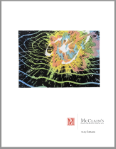
From left to right are the Namisei Six Tool Set, Namisei tools, Futatsu Wari Tools and Kento Nomi in the Large Canvas Tool Carrier. In the back row are Futatsu Wari, Soai Nomi and Deluxe Mallet, small.
Japanese Chokokuto (Woodcut Tools)
Like the carpentry tools or martial art swords of Japan, Japanese woodcut tools are famous not only for being among the keenest and most durable tools in the world, but also for the incredible craftsmanship that goes into their creation.
Chokokuto are wonders of design married to function. Over centuries of trial and error, designs, materials and manufacturing methods have been refined to create elegant, highly functional tools. Their very simplicity belies their great strength. With proper care and use, these tools will last a lifetime and more.
Master Craftsmen
A Tokyo firm with several hundred years of experience in metal work manufactures our Chokokuto. They are recognized in Japan as master craftsmen, and their products are sold in shops throughout that country under various brand names. Their quality is unsurpassed.
Hand-forging Chokokuto (Japanese carving tools)
photos from Moku Hanga by Akira Kurosaki
Manufacturing Process
Most carving tools are made from a single piece of extruded metal.
In contrast, the blades on Futatsu Wari Moku Hanga To and Josei Moku Hanga To are hand forged using two types of steel. One side, which later becomes the tip, is made of high carbon steel capable of taking and holding an edge of unsurpassed sharpness. This steel is forged by hand to softer, lower carbon steel for support.
The resulting blades combine sharpness and hard density with flexibility, creating incredibly responsive tools capable of absorbing the stresses placed upon them while carving. They hold a sharp edge for a very long time and can be successfully sharpened again and again.
Namisei Moku Hanga To, which are less expensive, use the same high quality hard and soft steels, but they are joined by an automated factory process instead of being hand forged. From that point on the craftsmen take over and the process is the same as it is for making Futatsu Wari and Josei Moku Hanga To.
Which method of forging is better? Traditional Japanese carvers prefer tools made from hand forged steel. Hand forging involves hammering the two layers of red-hot steel together, compressing the steel and introducing more carbon into a smaller area. This makes the hard steel even harder so it holds a sharp edge even longer. In comparison to hand forged tools, Namisei Moku Hanga To may need sharpening more often.



Sharpening Chokokuto (Japanese carving tools)
Left: photo from Moku Hanga by Akira Kurosaki
Center, Right: photos by Alex Prentiss
The blades are precision sharpened, first on a motorized lap wheel to set the bevel and give the edge its initial shape; then by another master craftsman who sharpens each tool by hand on Toishi (water stones). The top sides of the Sho To, Hangi To, Hira To, and Aisuki (knives and chisels) are hollow ground to simplify future sharpening. The special, shallow bevel on Komasuki, Maru To and Sankaku To (u-gouges and v-gouges) makes carving on a horizontal surface much easier. Handles are individually fitted to each blade.
Chokokuto Uses
Use these tools for carving wood or linoleum. If you are carving end-grain wood block or Resingrave, use Engraving Tools.
The Hangi To and Sho To (knives) are used to outline areas to be saved and printed. Sankaku To (v-gouges) are often used to carve thin lines and interesting textures.
Komasuki and Maru To (u-gouges) are used to outline, create texture and clear away wood. Most people find it easier to cut curved lines with Komasuki or Maru To than with Sankaku To.
Aisuki and Hira To (chisels) are used to clear, make textural marks and take off the tall, sharp ridges left behind by Maru To or Komasuki cuts.
Every Tool Tested and Ready to Use
All tools are razor sharp and ready for immediate use. McClain's guarantees this by having an experienced person carve a few marks into a piece of wood with each tool. This testing is done when the tools arrive from Japan, and again before they are sent to you.
McClain's is proud to be the exclusive distributor of these tools in the U.S.
For more information about the use and care of these tools, please go to Learning Center and look under "Woodblock Tools."
**Please note: McClain's woodcut tools are NOT intended for use on hard surfaes, including plastic, masonite, end-grain wood, plaster or metal. Only tools with a metal ferrule on the end of the handle are meant to be used with a mallet.



